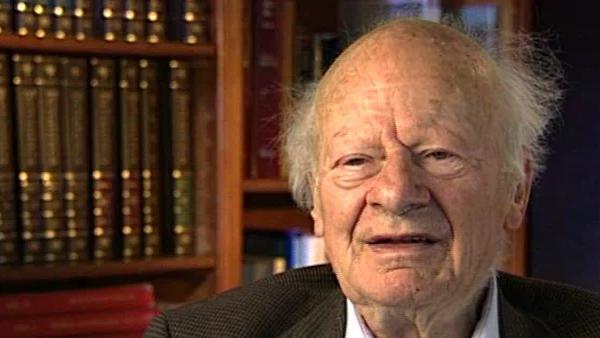NEXT STORY

Gerry Brown speculates on the formation of binary neutron stars
RELATED STORIES

NEXT STORY

Gerry Brown speculates on the formation of binary neutron stars
RELATED STORIES


|
Views | Duration | |
|---|---|---|---|
| 131. Stages in the stellar evolution theory | 1 | 291 | 03:34 |
| 132. Gerald Brown suggests solving the problem of supernova | 318 | 02:02 | |
| 133. Figuring how a supernova happens | 286 | 03:18 | |
| 134. James Wilson’s theory of supernovae | 301 | 03:02 | |
| 135. More on supernovae, the gain point | 251 | 03:05 | |
| 136. Supernova shocks | 262 | 03:44 | |
| 137. Accelerating shocks in supernovae | 247 | 02:58 | |
| 138. The 1987 supernova | 272 | 03:00 | |
| 139. Supernovas and the origin of the elements | 263 | 03:31 | |
| 140. Gerry Brown speculates on the formation of binary neutron stars | 256 | 02:35 |


Supernovas are terribly important for the... the world because the giant star of large mass, 10 times, 20 times the mass of the sun, has made all these heavy elements, not only the ones I mentioned, but all others as well, and the supernova now ejects all these elements into the galaxy and they are then in the galaxy ready to form new stars. And it is, well, a star like the sun which is a little less than 5 billion years old, is much younger than the galaxy which may be about 10 billion years old, and so the sun when it was formed, collected all that material which had been made by the supernova. Now, I should be still clearer; not all the elements are made in the supernova itself, but the... the material which is made in the supernova, which is mainly iron-56 and silicon, sulfur. That material then can go into another big star and in that other big star the temperature gets warm enough so that neutrons are produced just thermally by temperature, and these neutrons then gradually add themselves to existing nuclei and in that way you get the rich variety of... of nuclei which we see in the universe. As I said, it's this way that elements are produced, and it is nice to look back to 1938 when the main thing that Gamow and Weizsäcker wanted was to build up the elements. Time was not ripe for that. Time was ripe at that time only to explain the energy from stars, and later on astrophysicists, Schwarzschild, Iben, recognized that high temperatures would be formed after hydrogen is exhausted. Salpeter came along and made carbon; Hoyle came along and made oxygen; and then the other astrophysicists showed how other elements are made; then we get the supernova and then from the material of the supernova then other stars can make all the very rich variety of elements and isotopes which we find in the world.
The late German-American physicist Hans Bethe once described himself as the H-bomb's midwife. He left Nazi Germany in 1933, after which he helped develop the first atomic bomb, won the Nobel Prize in Physics in 1967 for his contribution to the theory of nuclear reactions, advocated tighter controls over nuclear weapons and campaigned vigorously for the peaceful use of nuclear energy.
Title: Supernovas and the origin of the elements
Listeners: Sam Schweber
Silvan Sam Schweber is the Koret Professor of the History of Ideas and Professor of Physics at Brandeis University, and a Faculty Associate in the Department of the History of Science at Harvard University. He is the author of a history of the development of quantum electro mechanics, "QED and the men who made it", and has recently completed a biography of Hans Bethe and the history of nuclear weapons development, "In the Shadow of the Bomb: Oppenheimer, Bethe, and the Moral Responsibility of the Scientist" (Princeton University Press, 2000).
Tags: George Gamow, Carl von Weizsäcker, Icko Iben, Martin Schwarzschild, Edwin Salpeter, Fred Hoyle
Duration: 3 minutes, 32 seconds
Date story recorded: December 1996
Date story went live: 24 January 2008